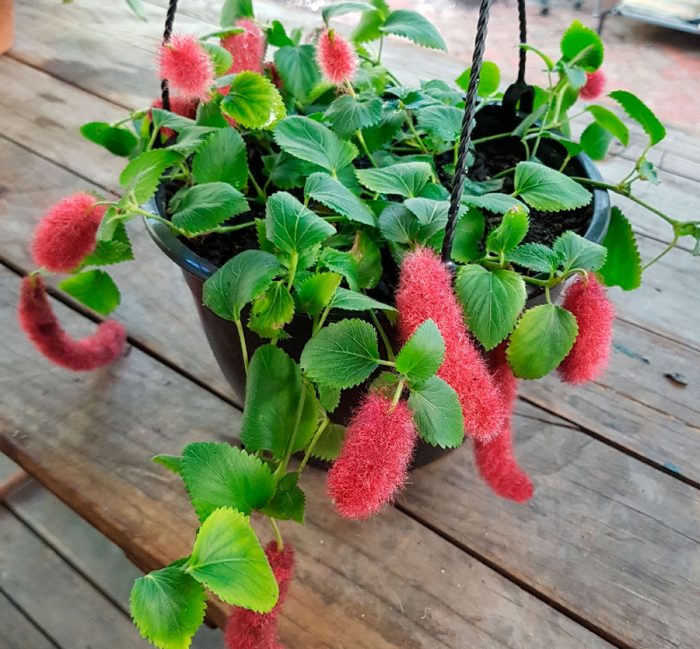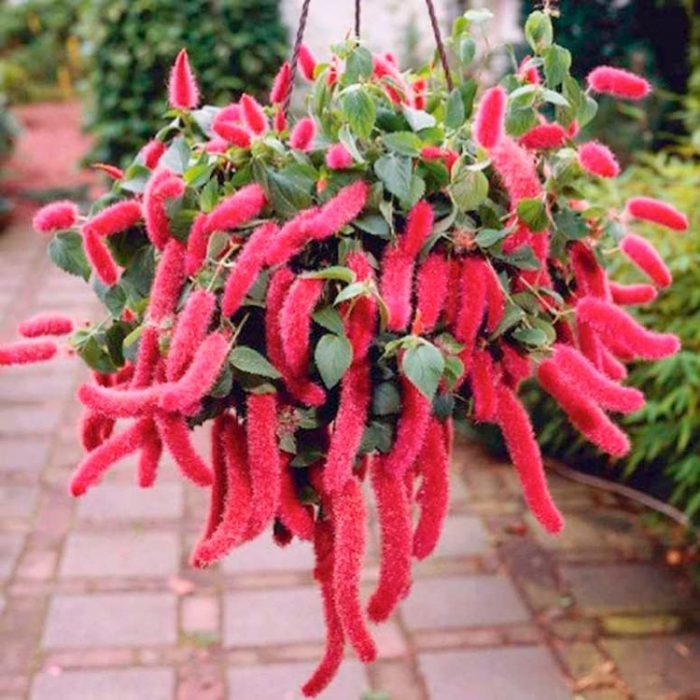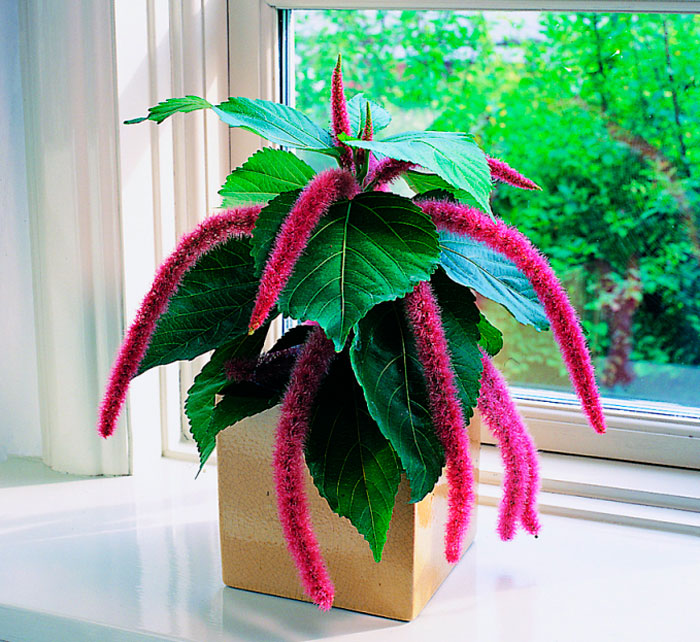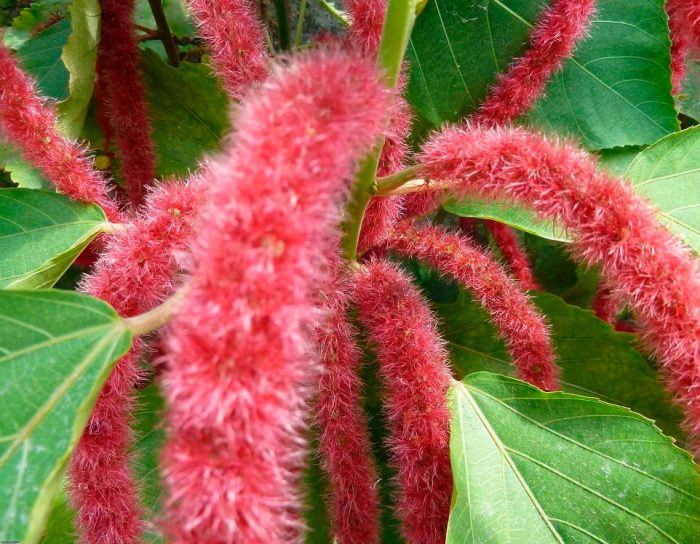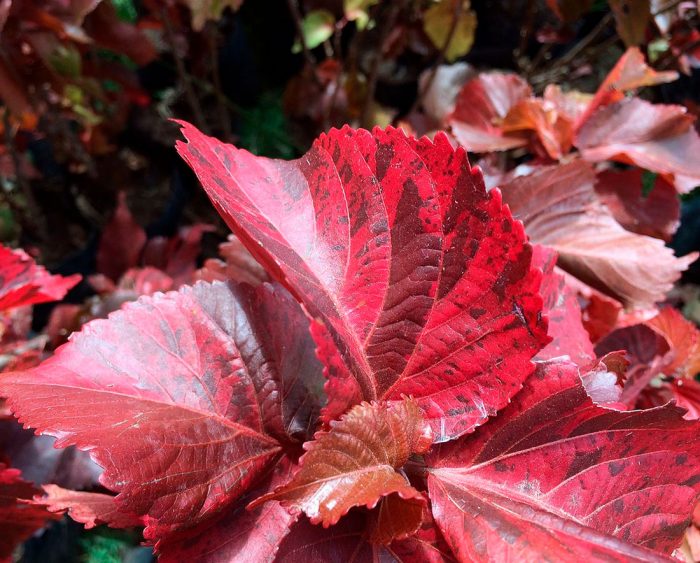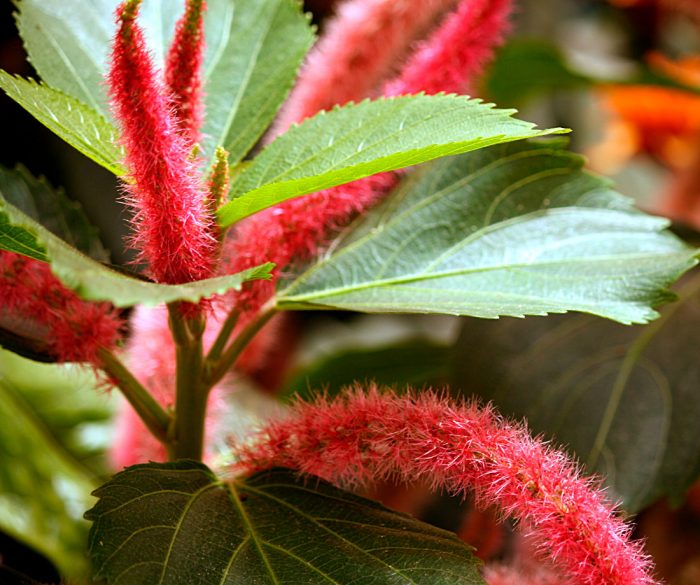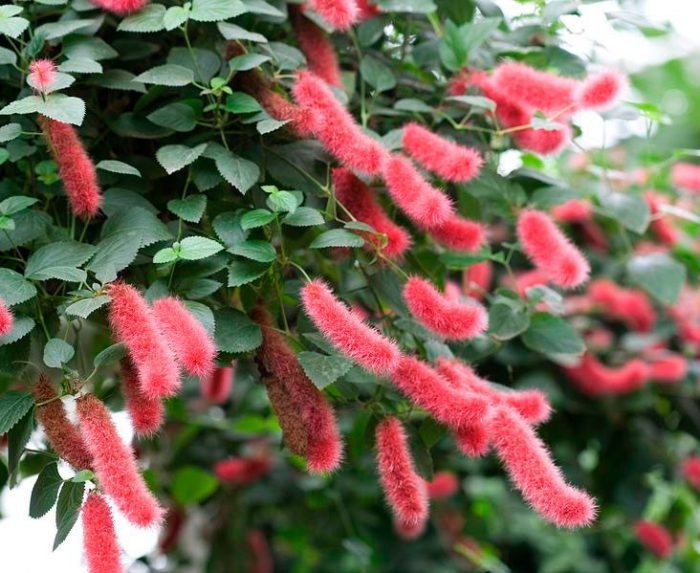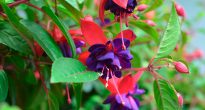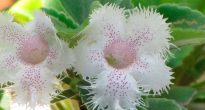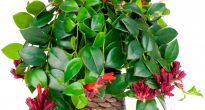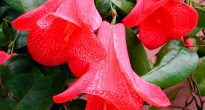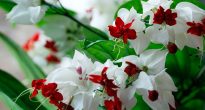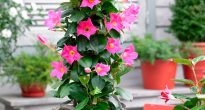The decorative deciduous perennial Acalypha is part of the Euphorbia family. This flower has two forms: ampelous plant and shrub. It comes from New Guinea and Malaysia, where it is found in tropical forests. In nature, some of the species can reach a maximum height of about 200 cm. However, in domestic akalifa, as a rule, the maximum length of the stems is about 100 centimeters.
The shoots are distinguished by increased flexibility, and they are decorated with oval or lanceolate leaf plates, while their color can be very different: from brownish-red to greenish. Cascading long spike-shaped inflorescences consist of small flowers of red-crimson color. If you provide the plant with optimal growth conditions and proper care, then it will bloom all year round.
Akalifa is a fast growing plant that is quite easy to care for. In order for the bush to look neat and bloom magnificently, we must not forget to cut off the flowers that have begun to fade in time.
Content
Brief description of cultivation
- Temperature... In the warm season, the optimum air temperature for akalifa is around 23 degrees. And in winter it should be within 15 degrees.
- Air humidity... Requires high humidity (at least 50 percent). At the same time, it is possible to moisten the bush from the sprayer only during the growing season (excluding the flowering time).
- Illumination... The place should be well lit, diffused light. In shading, the foliage becomes faded, and when direct sunlight hits its surface, burns are formed.
- Watering... Moisten the substrate systematically. In summer - at least 2 times every 7 days, and in winter - immediately after the top layer of the soil mixture dries out.
- Substrate... It should be good for water and air, and also be nutritious. You can use ready-made soil mixture purchased from a specialized store. If you wish, you can do it yourself: combine peat, sand, sod soil and humus.
- Fertilizer... Akalifa is watered with a nutrient solution twice or three times a month during the growing season. For its preparation, take a liquid mineral complex for home plants.
- Transfer... In spring or summer.In adult large bushes, instead of transplanting, you can simply replace the top layer of the potted substrate with a new soil mixture annually.
- Reproduction... In spring, by seed method or by apical cuttings.
- Pruning... To keep the bush always neat and effective, both sanitary and formative pruning is carried out every year: all stems are shortened by ½ part of their length. Once every 3-5 years, a rejuvenating pruning is carried out: the bush is shortened to 20-30 centimeters.
Caring for akalifa at home
Bloom
Indoor akalifa can bloom at any time of the year or even all year round. Spike-shaped fluffy inflorescences are collected from a large number of small red-crimson flowers. In some varieties, the length of the inflorescence can be up to 50 centimeters.
In order for the plants to always look attractive, one must not forget to promptly cut off the inflorescences that have begun to fade.
Temperature
Akalifa prefers to be warm. In the spring and summer period, the optimum air temperature is from 21 to 25 degrees, and in the cold season - from 12 to 16 degrees. If it is too hot in the room, this will lead to stretching of the shoots and the loss of decorativeness by the plant. If the room has the minimum permissible air temperature, then this can cause a slowdown in the growth of the bush and the development of various diseases in it. In addition, drafts are a particular danger for Akalifa. In this regard, in no case should it be carried outside, even in the summer.
Air humidity
Since akalifa is a tropical plant, it needs constant high humidity. During the growing season, it is recommended to spray the bush systematically from a spray bottle. In this case, it is the air around the plant that needs to be humidified, not its foliage. To do this, use well-settled non-cold water. It is impossible to moisturize the plant during the flowering period.
Illumination
This plant is highly photophilous, despite this, it needs mandatory protection from direct sunlight. Best of all, the bush will feel on the windowsill of an east or west orientation. It can also be placed on the south window, but in this case it will have to be additionally protected from direct sunlight. Akalifa should not be grown in a shaded area, as this will cause its stems to become elongated and the leaves small and faded.
Watering
Watering should be systematic and moderate at any time of the year. Remember not to allow the potted earth to dry out. It should be borne in mind that on hot summer days, the substrate in the pot dries out much faster. During the winter months, the frequency and abundance of watering should be slightly reduced.
Pot selection
The plant feels great in the pot, where its root system is quite cramped. But at the same time, do not rush to acquire an excessively small pot for akalifa, as this will only harm her. The root system should fit normally in the chosen container and have a small margin of room for further growth.
Soil mixture
Such a flower grows well in almost any soil mixture, the main thing is that it is well-drained and light. Best suited for growing it is a soil mixture consisting of leafy and soddy soil, humus, peat and sand, which should be taken in equal parts.
Top dressing
It is imperative to feed the Akalifa from the first days of spring until mid-October. For this, a mineral complex is used, which is introduced into the soil mixture with a frequency of 1 every 15–20 days. Also, the plant can be regularly fed with organic matter. For example, you can use biohumus.
Akalifa transplant
While the bush is young, it is very fast growing. In this regard, he needs regular transplants into larger pots, which are carried out once a year.It is recommended to transplant adult specimens no more than 1 time in 3 or 4 years. At the same time, old large bushes, if necessary, are transplanted by transferring them into a larger container, or they simply systematically replace the top layer of soil mixture with a new substrate.
Pruning
In order for the bush to always be neat and effective, formative pruning should be carried out annually in spring. To do this, cut off all the stems, leaving ½ part of their length (slightly less). If necessary, the plant can be rejuvenated, for this all its shoots are shortened to 0.2–0.3 meters. In order for young shoots to appear on the stumps as soon as possible, it is recommended to treat them with a solution of Zircon.
Dormant period
Akalifa, growing in indoor conditions, develops normally even without a full rest period. Reducing daylight hours can signal a bush that it is time to rest. Such a mild dormant period does not last long, and it will require a suspension of top dressing, as well as a reduction in the frequency of watering.
Reproduction methods
Growing from seeds
Homemade Akalifa can be grown from seeds. To do this, they are sown in a light and loose substrate consisting of sand and leafy soil. For the rapid appearance of seedlings, crops must be provided with an optimal temperature for growth: from 20 to 22 degrees. To maintain the required temperature and air humidity, it is recommended to place crops in a mini-greenhouse. In this case, the seedlings will appear much faster.
After the plant reaches a height of 20 to 30 mm, they are planted in individual cups. Then they are looked after in the same way as for adult akalifs.
Cuttings
Any type of akalifa can be propagated by cuttings. However, there is one important rule: akalifa bristly-hairy can be propagated in this way only in spring, and variegated varieties - throughout the year. For rooting, the cuttings are placed in a mini-greenhouse, and they are planted in a loose mixture of sand and peat.
Before planting for rooting, it is recommended to treat the lower part of the cutting with a root growth stimulating agent. The stalk takes root quickly and begins to grow intensively. After 6 weeks after planting the cuttings, their tops should be pinched in order for the bushes to grow more lush.


Watch this video on YouTube
Possible problems
Indoor akalifa is distinguished by its undemanding care and growing conditions, as well as its endurance. But if the bush is in inappropriate conditions or proper care is not provided for it, this can lead to various problems or the appearance of pests.
Common problems:
- Yellowing and flying around foliage... The bush feels an acute lack of moisture, therefore, the irrigation regime should be immediately adjusted. If nothing is done, then this will have an extremely negative effect on the appearance of the plant.
- Leaf plates wither and die... The room is most likely very cold. To remedy the situation, move the flower to a place where the air temperature will be optimal for it.
- The foliage becomes faded... This indicates that there is too little nitrogen in the substrate. Feed with the necessary fertilizer.
- Slow bush growth... This problem is associated with a lack of nutrients in the soil mixture. It is solved by the systematic application of fertilizer to the substrate.
- Brown specks on foliage... This suggests that Akalifa is sick with a fungal disease. To save it, you should treat it with a fungicide.
Most often, the following pests settle on such a plant: scale insects, mealybugs, aphids and thrips. To get rid of these pests, spray the bush with an insecticide solution.
Types of akalifa
Acalypha wilkesiana
This variety was obtained by breeders artificially.The plant has straight stems that woody over time. On them are large simple leaf plates that have the shape of a heart or an oval. Spike-shaped inflorescences consist of small reddish-crimson flowers. This Akalifa differs from the others in its unusual color of foliage, which can vary from speckled brown to greenish.
The variety has 2 forms:
- Godseffiana... On the surface of the dark green leaf plates there is a strong pubescence, and along the edge there is a border of golden color.
- Mosaic (Musaica)... Large brownish-red leaf plates are decorated with small specks of dark color.
Acalypha hispida
Akalifa bristly-hairy, or akalifa bristly, or red cat's tail.
The species is represented by shrubs. Its foliage is rich green, and the spike-shaped inflorescences can reach about 50 centimeters in length. This type of kalifa is the most popular among flower growers.
Akalifa Haitian, or cat's tail (Acalypha hispaniolae)
This ampelous plant has thin flexible stems, reaching about 0.3 meters in length. The dark green oval leaf plates have a serrated edge. Red flowers are part of short fluffy spike-shaped inflorescences.
The benefits and harms of Akalifa
Benefit
If you want to improve the ecological situation in the room and apartment as a whole, then you should pay attention to the Akalifa. It is able to normalize electrostatics, as well as cleanse the air from pathogenic microorganisms and fungi. In addition, the Akalifa bush helps to stabilize the positive energy in the room, and it also has the ability to have a calming effect on the person who is in the room.
Harm
In any part of the Akalifa there is a rather dangerous poison. In this regard, for such a plant, you should choose a place that is difficult to access for pets and small children.


Watch this video on YouTube

